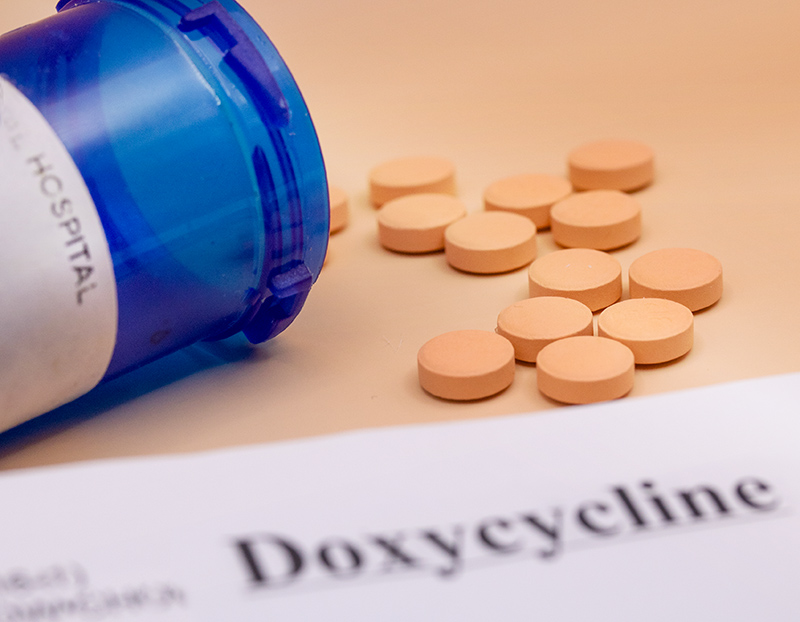HIV advocates praise Biden administration’s “refocused” national HIV/AIDS strategy
New strategy seeks to address social determinants of health and racial equity, and engage the private sector, to curb the spread of HIV.

On Wednesday, to coincide with World AIDS Day, President Joe Biden unveiled a new national HIV/AIDS strategy that refocuses efforts on the long-stated goal of ending the HIV epidemic by 2030.
Speaking to an audience of HIV advocates, doctors, educators, and others at the White House, Biden touted the strategy as centering on “the kind of innovative, community-driven solutions that we know will work.”
“It’s a plan to make sure that the latest advances in HIV prevention, diagnosis, and treatment are available to everyone, regardless of their age, race, gender identity, sexual orientation, disability, or other factors,” Biden said in prepared remarks. “It shouldn’t matter where you live in the country or how much money you make, we have to respond across the board to the HIV epidemic everywhere and support all people living with HIV. And, critically, this strategy takes on racial and gender disparities in our health system that for much too long have affected HIV outcomes in our country — to ensure that our national response is a truly equitable response.”
Biden noted that the White House has asked Congress for $670 million in budget requests for the “Ending the HIV Epidemic” initiative — a $270 million increase from the previous funding level — and expressed confidence that the money would eventually be appropriated. He spoke of the importance of connecting HIV-positive people with care, a critical step that advocates have long hailed as essential to curbing infections by ensuring those living with HIV achieve viral suppression.
Biden also emphasized the importance of fighting decades-old stigma associated with HIV, calling on states to repeal “HIV criminalization laws that do not reflect an accurate understanding of HIV” or “perpetuate discrimination, exacerbate disparities, discourage HIV testing, and take us further away from our goal.”
Under the new strategy, which maintains the bulk of the framework and many of the goals established by the Obama and Trump administrations’ strategies for combating the HIV epidemic, the Biden administration will focus on resolving or mitigating the factors the contribute to new infections and poorer health outcomes for people living with HIV. The new strategy seeks to engage federal agencies outside of the health care sphere, such as the Departments of Agriculture, Education, Labor, Housing and Urban Development and Veterans Affairs, to address the social determinants of health, combat racial disparities, and provide wrap-around services and other supports for those living with the virus.
The latest strategy also seeks to reduce health inequities by targeting and addressing the needs of “priority populations” at higher risk of HIV, including Black women, transgender women, youth aged 13 to 24, people who inject drugs, and Black, Latino, and American Indian/Alaskan Native men. As of the end of 2019, the CDC estimated that there were more than 1.1 million people in the United States living with the virus, with new infections disproportionately impacting low-income people, youth, and communities of color.
Carl Schmid, the founder of the HIV+Hepatitis Policy Institute and a member of the Presidential Advisory Council on HIV/AIDS (PACHA), said that while the goals of the Biden administration’s are similar to those of their predecessors, the Biden administration is emphasizing specific planks in its strategy that it believes will be more effective at reaching or engaging certain populations in the hope of curbing new infections.
“The last strategic plan was very sound, but there were some missing elements that the Biden administration added to its plan. Some of the missing elements [in the Trump strategy] were any mention of the Affordable Care Act and reliance on expanded Medicaid, because that could really help people living with HIV, particularly in the South,” Schmid says.
See also: Biden recognizes World AIDS Day, highlights impact of HIV on LGBTQ community
“There were mentions of LGBT focus, and transgender issues were mentioned but not highlighted as much as it should be. There was a mention of race [in the Trump plan]. But what the Biden administration is doing is amplifying those issues, calling out racism as a public health issue,” adds Schmid. “I think housing was mentioned, but there’s going to be more of a focus on housing. There’s also going to be a greater focus on HIV and aging. There will be a great focus on [ensuring] better quality of life for people living with HIV, and a greater focus on the social determinants of health. All of these were mentioned, but they’re going to be amplified.”
Schmid also noted that the Biden strategy will seek to add a private sector component to help combat the epidemic and fight stigma associated with HIV — an initiative he’s been involved with through his role as a member of PACHA.
“The private sector is not just the HIV companies, drug companies and testing companies, but other health care companies, like CVS; the health insurance companies; the influencers, like Facebook and TikTok and Grindr, and all other high tech companies; and those industries that have large employee bases that are affected by HIV, like the travel and tourism industry,” Schmid says.
“We want private sector companies that can speak to communities that are disproportionately impacted by the epidemic, like BET, like Goya,” he adds. “And so many of the large companies are now focusing on race and equity, and are looking for things to do. We’re glad that CVS has already announced that in their race and equity efforts, they’ve chosen a couple of areas to focus on, specifically HIV and sickle cell. So that’s a new component as well that we didn’t have in the last strategic plan.”

The newly announced strategy has won praise from other advocates as well. Paul Kawata, the executive director of NMAC, the national organization focusing on curbing the spread of HIV within communities of color and normalizing discussions of race and equity within the HIV movement, said in a statement that he was “pleased” with the new strategy, particularly its emphasis on incorporating the latest data on HIV incidence, prevalence, and trends, and its holistic approach that targets social determinants of health and quality of life for those living with HIV.
“Hard data is critical to an effective strategy to end HIV. Without knowing who is at risk, where they live, and what prevention and treatment approaches work, it’s impossible for any organization to reach those who most need to be reached,” Kawata said. “In an epidemic that has been marked by so many responses based on political ideology, this reliance on science is critical.
“We are incredibly pleased that the administration recognizes that HIV care and prevention doesn’t occur in a vacuum. For those living with or at great risk of HIV, there are numerous other issues in their life that make HIV a low priority, housing being one of the biggest ones. The inclusion of numerous cabinet agencies in the new strategy, including Housing and Urban Development and Veterans Affairs, shows that this administration understands that ending the HIV epidemic is not just about medications and condoms; it’s about addressing the critical issues in a person’s life.”
Schmid notes that part of ending the epidemic will require building the infrastructure necessary to connect people with prevention or treatment options, particularly in the American South, where half of all new HIV infections are, and where most states have failed to expand Medicaid, thereby limiting the services that low-income people at higher risk of HIV infection have available to them. And that requires investing more resources, and specifically, more dollars, in those areas, not only for actual testing, prevention and treatment resources, but for educational resources for medical providers in those regions who may not be as familiar with HIV or who deal with vulnerable communities, such as Black and Latino communities, gay men, and Black women.

Schmid acknowledges that one of the crucial keys to ending the epidemic is testing and treatment so people know their HIV status, and, if HIV-positive, can achieve viral suppression through medication. While there are currently resources and programs in place to help low-income people access treatment, such as the Ryan White Act, there is a lack of a similar program focused on connecting people with preventative measures, such as pre-exposure prophylaxis, or PrEP, which can currently be taken orally to avoid contracting HIV.
That’s why Schmid has hopes for the “PrEP Assistance Program Act,” a piece of legislation introduced in October by U.S. Rep. Bonnie Watson Coleman (D-N.J.), and co-sponsored by 40 other members of Congress, which would provide $400 million annually to states, community-based organizations, health centers, and other organizations serving vulnerable populations to establish and support PrEP programs.
Unfortunately, PrEP uptake has been limited, particularly among communities already disproportionately impacted by the virus, which raises questions about access and equity when it comes to insurance coverage for the medication. That’s why U.S. Sen. Tina Smith (D-Minn.) and U.S. Rep. Adam Schiff (D-Calif.) introduced the “PrEP Access and Coverage Act” on Wednesday. The bill, an update of a similar measure authored by Vice President Kamala Harris when she was a U.S. senator, would establish grant programs to pay for PrEP and its ancillary lab services, and separate grants for public and provider outreach programs. The bill also seeks to eliminate out-of-pocket costs for individuals on PrEP who have private insurance, or are enrolled in government programs like Medicare and Medicaid by requiring insurance companies to cover PrEP drugs without cost-sharing.
Schmid also expresses hope that advances in medicine, such as PrEP medication that can be administered via injection every few months, can help curb the epidemic while empowering vulnerable individuals who wish to protect themselves from HIV. Thus far, injectable PrEP has not yet been approved by the FDA, but may be green-lighted as soon as January 2022.
“We’re at the beginning of long-acting agents for PrEP and treatment,” he adds. “We’re looking at the possibility of long-acting pills once a week, once a month, an implantable once a year. That’s why we need a national PrEP program to, you know, to make sure that these drugs are delivered to people.”
See also:
Pitchers awarded $100,000 grant from NGLCC and Grubhub
Gay couple beaten with hammer and robbed by gang after holding hands
Trans Jeopardy! player Amy Schneider makes history competing in Tournament of Champions
Support Metro Weekly’s Journalism
These are challenging times for news organizations. And yet it’s crucial we stay active and provide vital resources and information to both our local readers and the world. So won’t you please take a moment and consider supporting Metro Weekly with a membership? For as little as $5 a month, you can help ensure Metro Weekly magazine and MetroWeekly.com remain free, viable resources as we provide the best, most diverse, culturally-resonant LGBTQ coverage in both the D.C. region and around the world. Memberships come with exclusive perks and discounts, your own personal digital delivery of each week’s magazine (and an archive), access to our Member's Lounge when it launches this fall, and exclusive members-only items like Metro Weekly Membership Mugs and Tote Bags! Check out all our membership levels here and please join us today!























You must be logged in to post a comment.